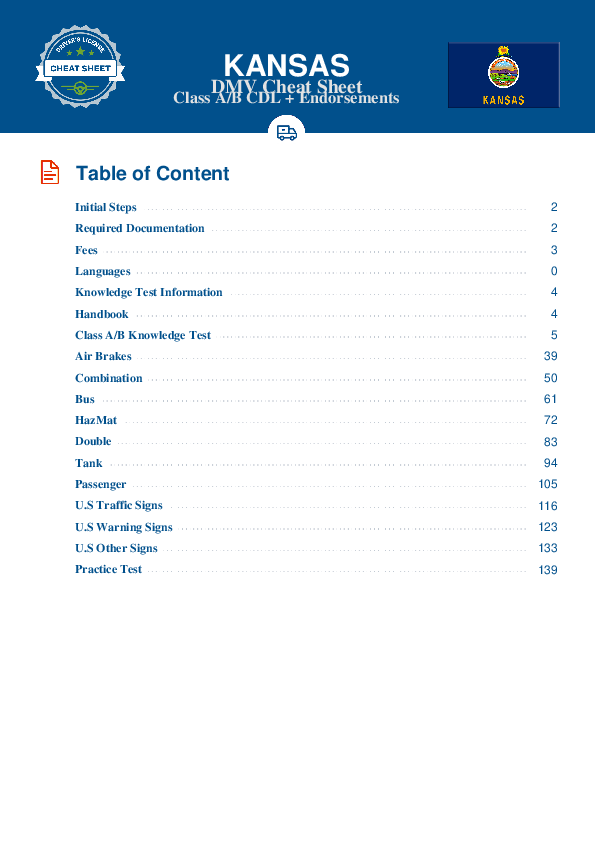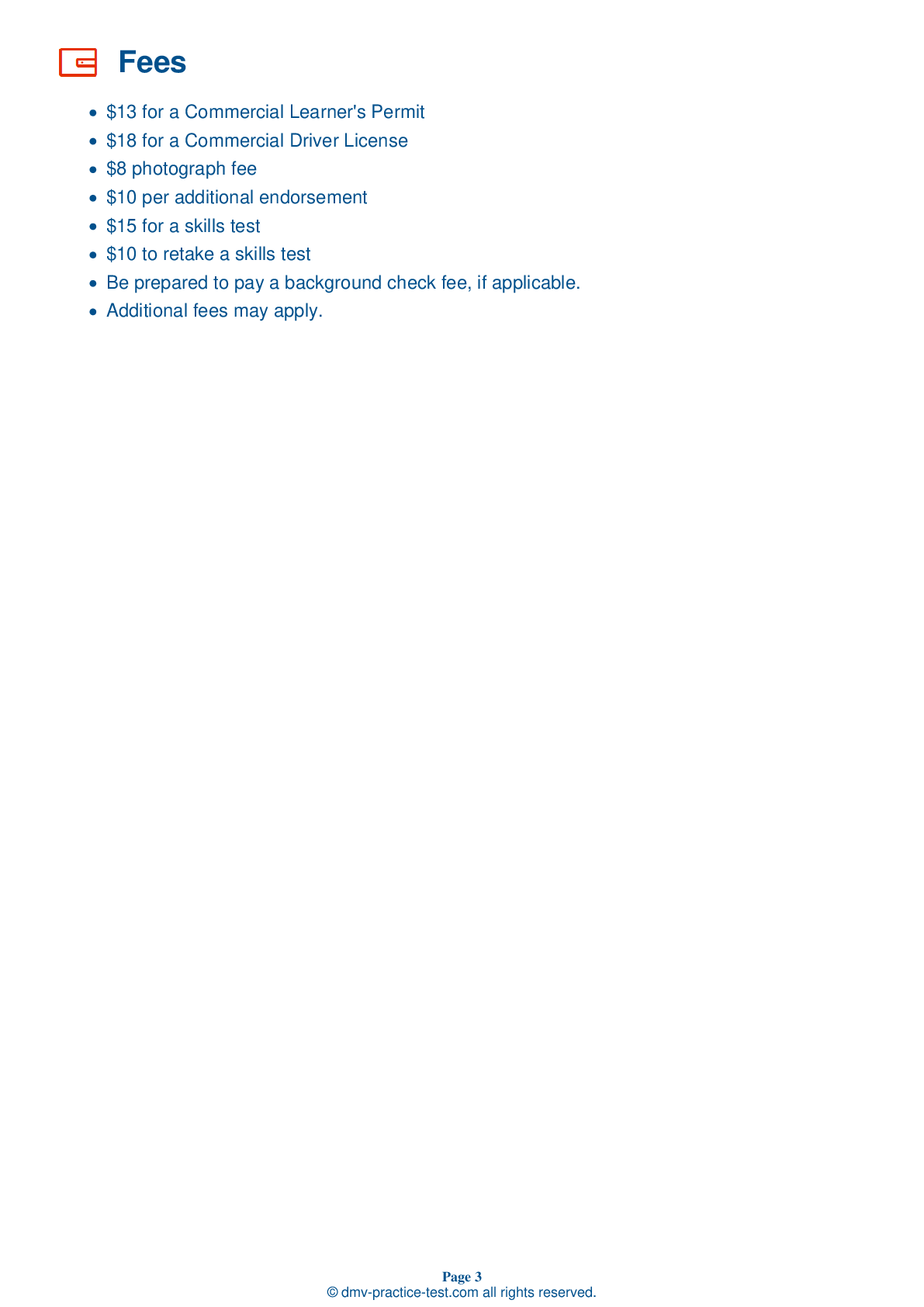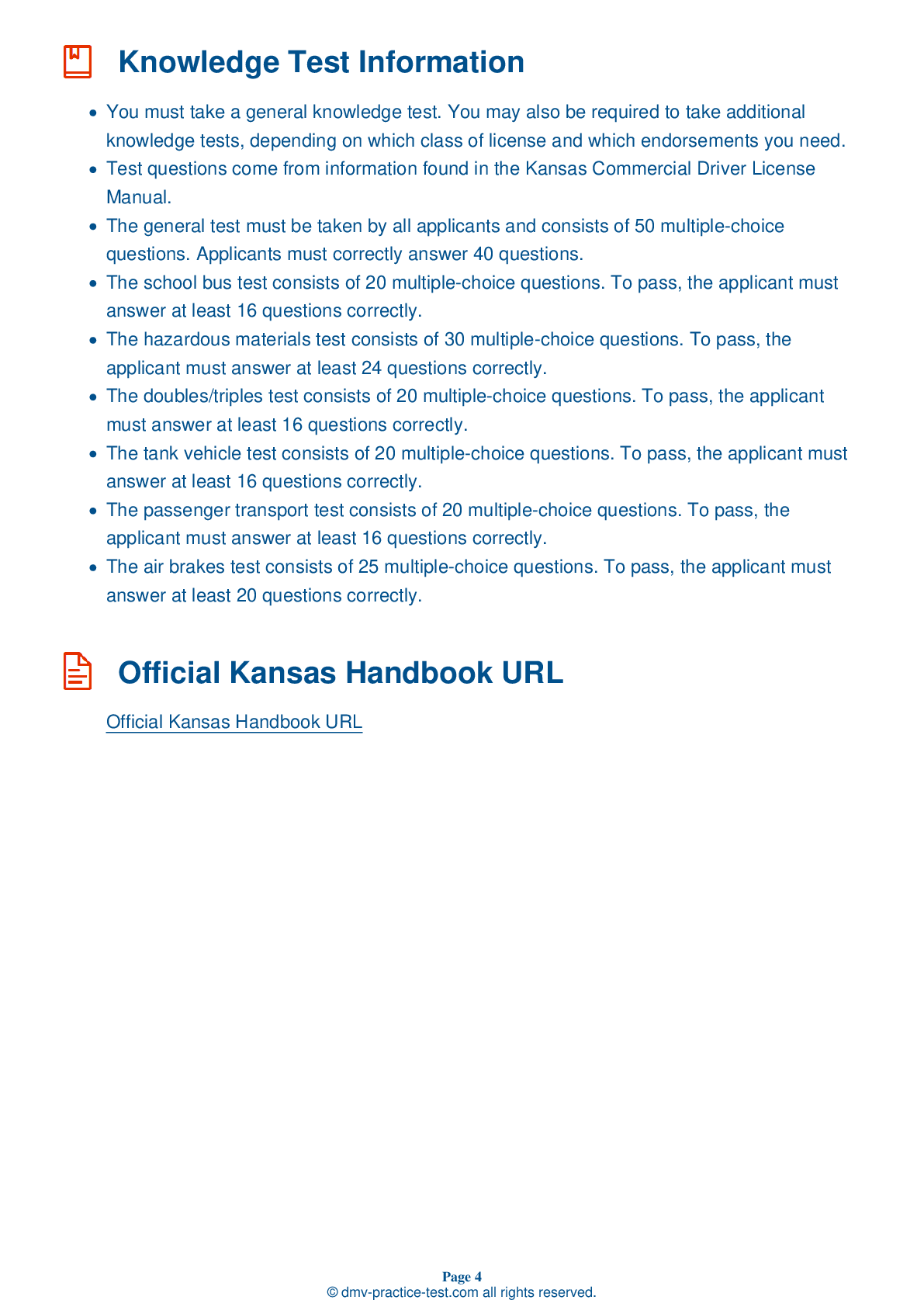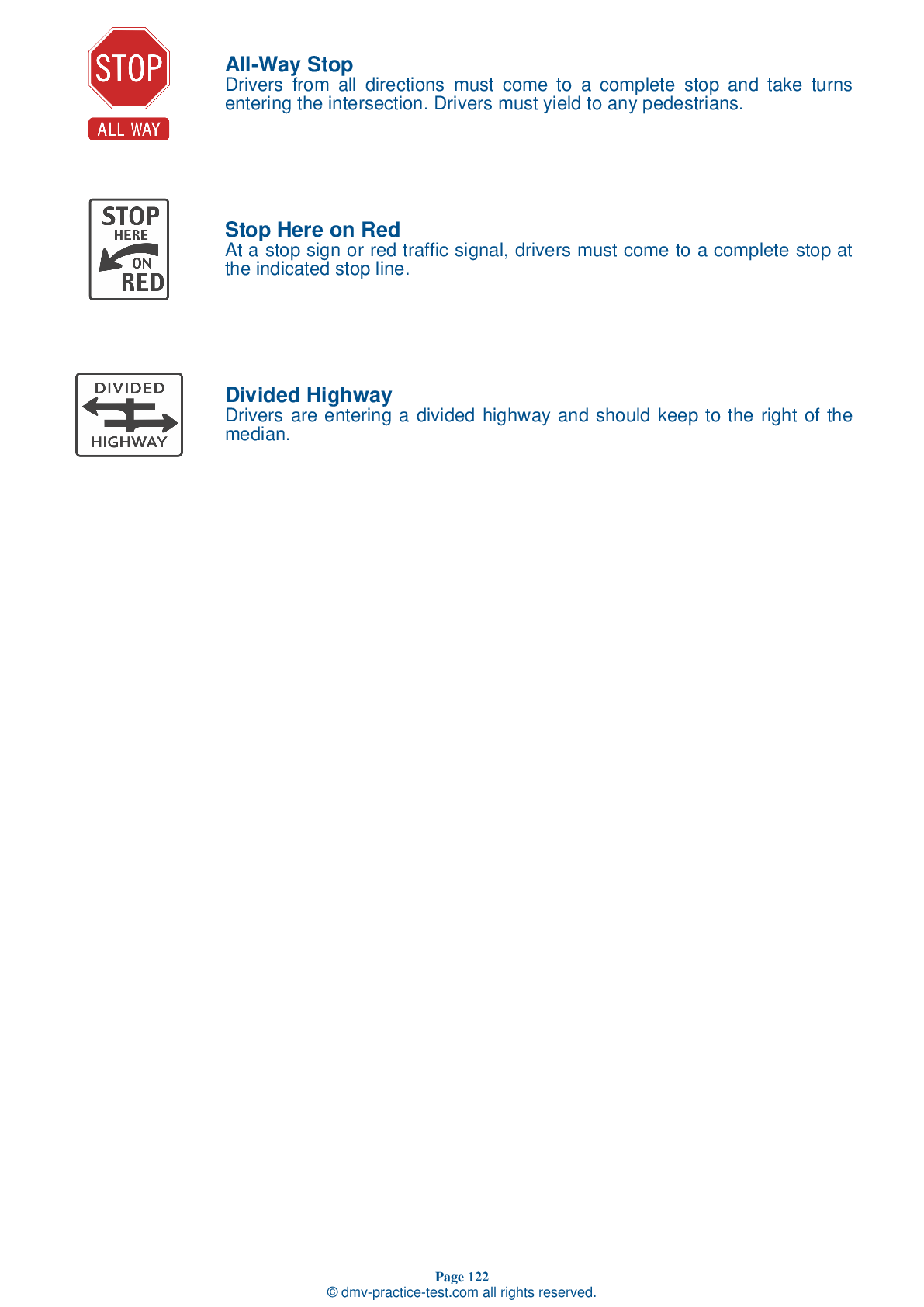Bus Driver Testing | Kansas 2025 #1
Train for FREE online with our KS bus CDL test. The official exam test consists of several obligatory parts, with all of them checking your knowledge of different blocks of road rules. If you need to obtain a license in Kansas in 2025, learn how to become a bus driver and then practice as much as possible. Free sample tests published on our website will help you check and improve your knowledge and boost your grades. Please bear in mind that DMV requirements for a bus driver may vary from state to state.
1 . Driving too fast:
Driving at excessive speeds is a major cause of fatal crashes. Never drive above the posted maximum speed limit and adjust your speed to fit conditions.
2 . On a bus, the driver:
The driver's seat on a bus should be equipped with a seat belt, which should always be used.
3 . In an engine compartment, loose belts will:
Be sure to check the tightness of the belts in your engine compartment. Loose belts will not turn the water pump and/or fan properly, which can lead the engine overheating.
4 . Hydroplaning usually occurs:
In places where water collects on the road, it is possible for a vehicle to hydroplane. Low tire pressure or worn tire tread makes this more likely to happen. If there is enough water on a road surface, hydroplaning can occur at speeds as low as 30 mph.
5 . When driving with covered cargo, a cover that flaps:
Cargo covers should not flap in the wind. They could tear loose, not only uncovering the cargo but also blocking the views of drivers.
6 . Improperly loaded cargo can:
Cargo must be properly loaded and secured to prevent it from falling or shifting dangerously. During a quick stop, improperly loaded cargo could injure or even kill the driver.
7 . What is a Gross Vehicle Weight Rating?
Gross Vehicle Weight Rating (GVWR) is the weight specified by the manufacturer as the maximum weight of a single vehicle and its load.
See the exact questions that will be on the 2025 Kansas DMV exam.
99.2% of people who use the cheat sheet pass the FIRST TIME
Lillian MCcranie explains how our CDL study guide was helpful in passing the exam and recommends it to everyone.
Cameron tells us how he purchased the CDL exam, and found it to be a useful tool which helped him pass the exam and find a job.



